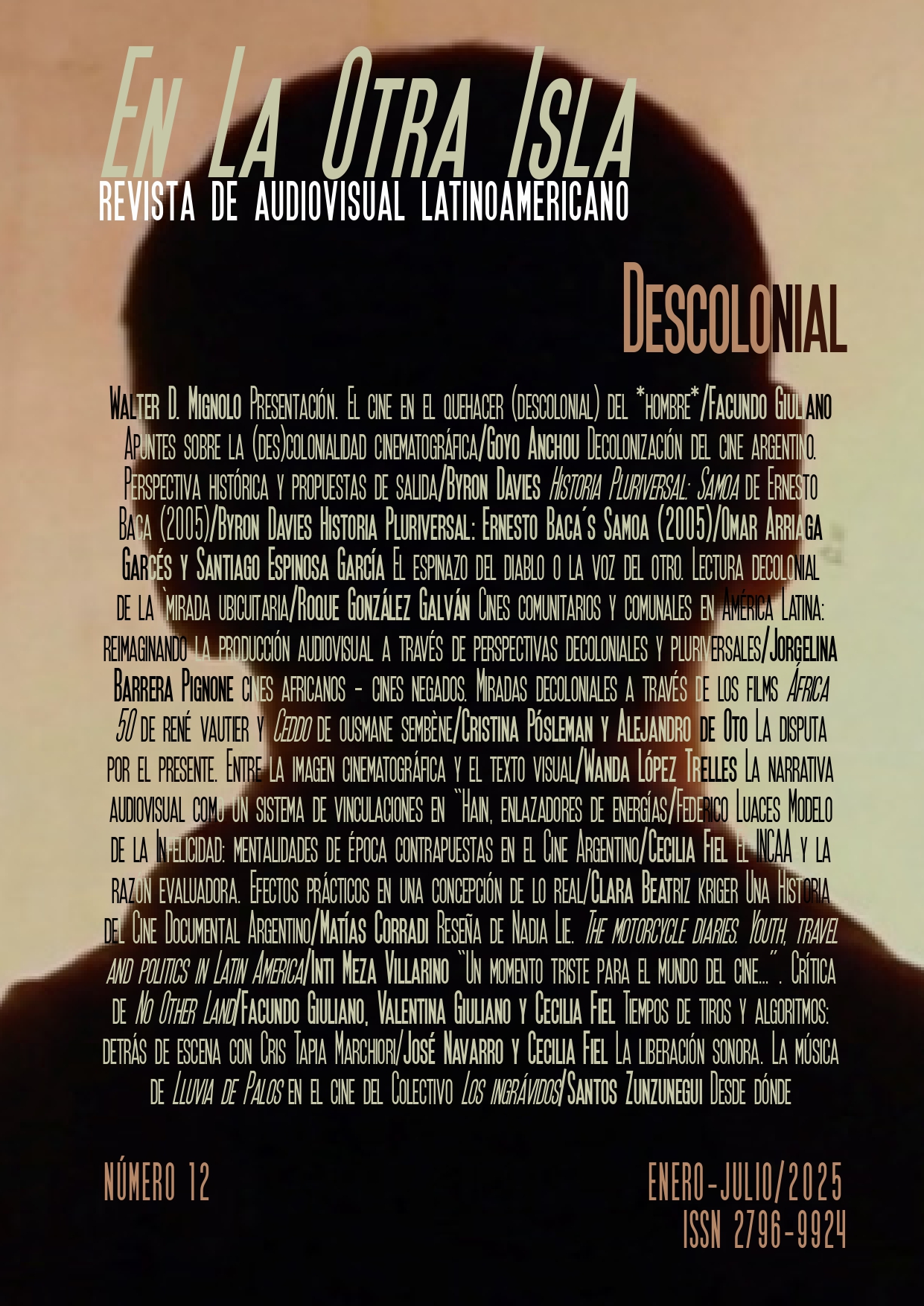Historia Pluriversal: Ernesto Baca’s Samoa (2005)
Resumen
Ernesto Baca’s feature-length experimental film Samoa (2005) was fundamental in kindling a renewed interest in Super 8 in Argentina at the beginning of this century. Its massive collection of shots are organized around a single but multivalent idea: the mirror as site of the contraconquista. The film opens and closes with shots of conquistadores bearing a light-reflecting mirror, a symbol of the “images at war,” that is, of the renaissance perspective against which the film will frequently enlist the flatness of the Super 8 format. Samoa’s
non-linear structure itself takes up the figure of the mirror: a symmetrical, palindrome-like curve. Its conception of space is derived from the gap between those sides of the curve, thus making it the opposite of spatial conceptions dominant in “classical” cinema: a whole region of structure and depthless shots versus thin structure and deep space. The film then becomes a sustained interrogation of the notion of a center: the center as a fold between two mirrored representations, which in turn becomes an occasion for interrogating the relationship between metaphysical centers and geopolitical ones (metropoles). The film thus points towards an ethics of liberation not incidental to, but arguably internal to, Super 8 experimental cinema.



